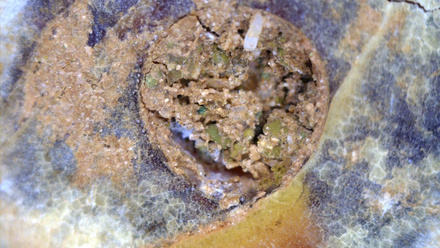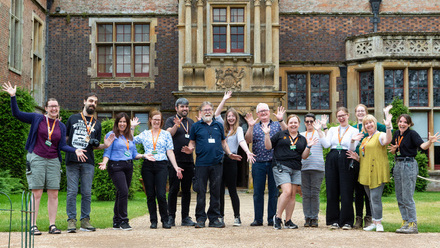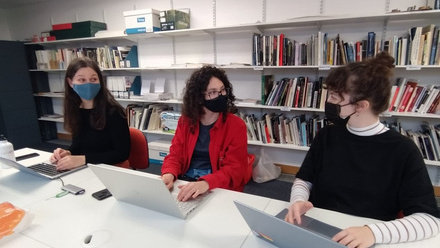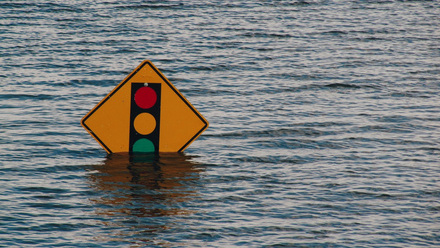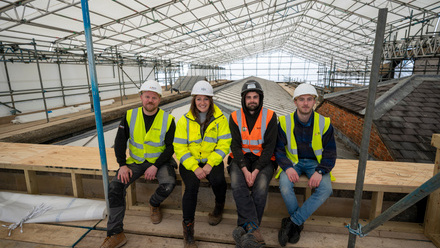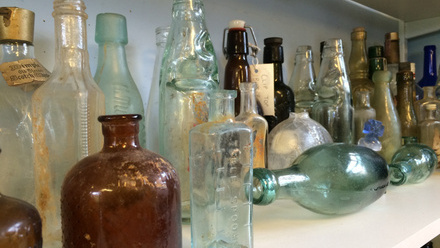On Wednesday 27 October, ahead of the opening of COP26, Historic Environment Scotland hosted a Climate Resilience Heritage Summit in partnership with Cadw, Historic England, English Heritage, The National Trust, The Department for Communities for Northern Ireland, and The National Trust for Scotland. The aim of the Summit was to bring together academics, practitioners, regulators and charitable bodies to showcase their efforts to explore the exposure, vulnerability and impacts of climate hazards on the historic environment.
If we keep talking to heritage people, then we will get heritage answers.
Icon’s Chief Executive, Sara Crofts, joined a discussion panel with David Thickett (English Heritage Trust), Jill Fairweather (Cadw) and Tanya Venture (PhD researcher) which was ably chaired by Hannah Fluck (Historic England) and supported by Kate Guest (Historic England) and Ruth Knight (English Heritage Trust).
The panel’s task was to share ideas about how we prepare the places we care about for the impacts of climate change, and to consider approaches to adaptation, including managing our acceptance that not everything can be saved.
Sara shared the following reflections:
Question: What is ‘adaptation’ in relation to heritage assets?
As someone who leads an organisation that is not directly responsible for any heritage assets, I challenge myself to think about what adaptation means for us as a charity, because adaptation applies to organisations as much as it does to places. So, for me, adaptation means embedding sustainability into our operational structures, writing it into job descriptions, thinking about climate change when we write new policies, and having an ethical and environmental element to all our decision-making. To give a practical example: our concerns about climate change led to us moving into a BREEAM excellent-rated office space last year, and we previously signed up to DefaultVeg, which means that we stick to vegetarian event catering. Every organisation can put its values into practice when choosing venues for events – only opting for those that share their commitment to sustainability.
We also need to think about how we help our people – our staff and volunteers – to adapt. So there is a lot of work that we can do to focus on behavioural changes and how we help everyone to make better choices within our organisations, whether that’s the products that we choose to buy, the way that we recycle or how we present ourselves to the world. These are easy measures that we can all embrace.
Question: What different approaches to adaptation are there?
There’s a suite of different approaches that we can apply. Our task is to understand the range of tools and methods that are available and to get better at making decisions about which ones we should deploy in different circumstances. We already know that some environmental measures that might be good for our buildings might not be good for our collections and vice versa. So we’re going to have to develop different decision-making mechanisms, and to think holistically in a way that we possibly haven’t done before. We also need to learn how to have grown-up conversations about trade-offs and compromises.
In addition, we need to get better at documenting and sharing our decision-making processes. There isn’t time for everyone to learn from scratch, so we have to find better ways of capturing and sharing our knowledge. The internet is awash with case studies – but do they contain the right information to help someone else replicate the actions successfully, and are the case studies collected in places where others might easily find them?
Question: Loss isn’t necessarily a new concept for our heritage, but it seems something that we are just getting comfortable with talking about – why is that?
If we turn to history, we can see that many heritage organisations sprang to life because a person or a group of people saw a need to save something. SAVE Britain’s Heritage, building preservation trusts and the Society for the Protection of Ancient Buildings are prime examples. All of these important organisations were born out of a reaction to a perceived threat; they were set up to oppose an imminent loss. It would be very strange for their current trustees to actively think about giving up on the buildings and places that their predecessors fought to save. So perhaps we need to reframe our understanding of the current threat, to set it into the global context of the risks that climate change poses to our shared cultural heritage. We need to look beyond local concerns and see the bigger picture.
We also need to find ways to have better conversations about what matters, and how we make choices about what to save and where we let go. And we must recognise that professional assessments of what is significant, and what is not, are only one part of that debate. The intellectual approach to defining significance doesn’t adequately deal with the fact that people are attracted to THEIR local heritage, regardless of the degree of importance assigned by the experts. Heritage is personal. Culture is personal. Who has the right to tell a community that its heritage can’t be saved; that it should give up what it cares for in the service of the greater good?
Question: What action would you give our audience?
If we keep talking to heritage people, then we will get heritage answers. We should be more willing to talk to people outside of our sector and to learn from others. A great way to start would be for organisations to join Fit for the Future. Fit for the Future is an environmental sustainability network with over 100 charities, heritage organisations, cultural venues, public sector bodies and more in its membership. It facilitates knowledge-sharing and collaboration across organisations and sectors so that they can achieve the rapid and far-reaching changes needed to decarbonise, adapt to climate change and drive positive environmental impacts. Icon is already a member of Fit for the Future because we see the value of learning from our peers, exchanging information and guidance, and supporting one other.
The Climate Resilience Heritage Summit marks a welcome new commitment by the national agencies in all four home nations to work collaboratively to tackle the shared threat of global climate change, and its impact on cultural heritage.
Icon welcomes the commitment to increased partnership working to share data and to improve collaboration between public bodies, private sector organisations and researchers.
We look forward to working alongside our public sector bodies to develop consistent approaches that will empower the managers and owners of historic objects, collections and buildings with increased knowledge and understanding of climate risk and in turn to develop and implement effective adaptation measures to enhance resilience to climate change.

